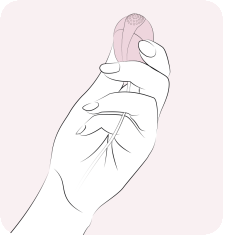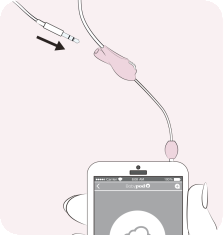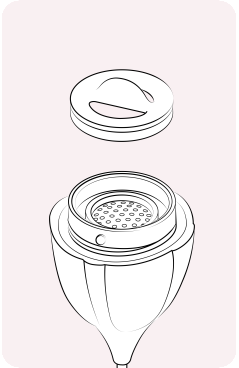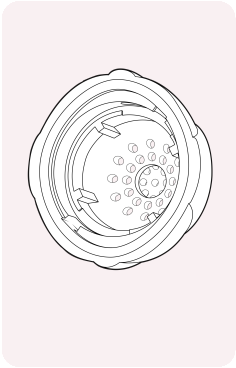It is very simple. To begin with, get into a comfortable position.




Remember that cleaning Babypod to assure hygiene is essential before and after each use.




Recommendations and cautions:
Don’t use in the following cases:
We know that the inner ear is fully developed at week 16 of gestation, but until now medical literature could only confirm a functioning auditory system from week 26. This research study shows for the first time that the fetus begins hearing at week 16.
The fetus receives sounds from inside the mother's body, such as her heartbeat, breathing and intestinal activity. It also perceives sounds the mother makes, such as when she is speaking or walking with high heels, in addition to other external sounds.
The fetus is well-protected from noise. The fact that it is living in a soundproof environment means that perceived sounds are distorted, as has been shown in research done on sheep using intrauterine microphones. According to this research, the majority of sounds are perceived as whispers (around 30 decibels), while the motherís voice during normal conversation (60 decibels) is barely discerned at all (24 decibels).
And, as most sounds are repetitive, the fetus becomes accustomed to them and does not react. They do not prevent the fetus from sleeping.
We could say that the sounds heard in utero are like the background rustles heard in a forest.
It is only possible through a single route, the vaginal route.
The vagina is a closed space, so sound is not dispersed into the environment. In addition, there are fewer layers of soft tissue separating the baby from the sound source, only the vaginal and uterine walls. By placing a speaker in the vagina, the barrier of the abdominal wall is removed and the baby can hear the sounds almost as loudly and clearly as they are emitted.
Before the scan, the pregnant patient inserted the intravaginal device designed for the study, which emits an average sound intensity of 54 decibels (equivalent to a conversation in low voices or background music).
87% of fetuses reacted with non-specific head and limb movements, accompanied by specific mouth and tongue movements which stopped when the music stopped. Likewise, with intravaginal music, nearly 50% of fetuses reacted with a striking movement, opening their jaw very wide and sticking out their tongue as far as it would go.
A set of headphones which emitted music with an average intensity of 98.6 decibels (equivalent to an ambulance siren or music in a nightclub) were placed on the pregnant womanís abdomen.
No changes were observed in fetal facial expression during this part of the study.
As we are looking at a response and not simply a reflex, the reaction of the fetus depends on multiple factors, which is why it is different each time. It varies depending on the neuronal activity of the brain stem at that particular moment, which means that the response could depend on the sleep phase the fetus is in or blood sugar levels. For example, when we sing to a baby, the response differs depending on whether the child is hungry, thirsty or sleepy.